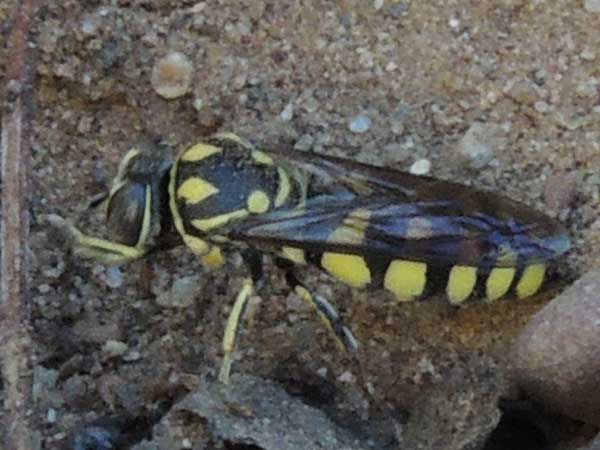Sand Wasp
Steniolia sp.

In the process of digging a nest hole in a sandy flower bed, Phoenix, Arizona, 4 Oct. 2014.
Crabronidae -- a Wasp Family
These brightly marked yellow and black wasps are wary and very active predators of flies - notice the huge eyes with which to see well. The females build tunnels into sandy soil which are provisioned with flies that are captured and paralyzed with a sting. The wasp larvae (grubs) feast on the flies. Sand wasps, in particular the males, are frequent visitors of flowers where they may be important pollinators. These insects, therefore, are beneficial to the gardener and are fascinating to watch!
What ever you do, don't call an exterminator. (You might see an advertisement, but please know it was not my choice.) If you want your yard to be an exciting wildlife discovery place for your family keep it wild and chemical free. Plant plenty of Native Plants. Also, try not to be so fastidious about fallen leaves and dead branches - often these are the food and home for the small organisms that would live there.